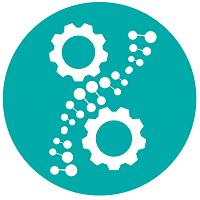Manufacturing & Analytical Characterization
Symposium: Navigating the Complexities of Novel Modalities and Delivery Systems 1
Overcoming Challenges in Characterizing (Degraded) Surfactants through Advanced Chromatographic Methods
Tuesday, November 11, 2025
10:30 AM - 11:00 AM CT
Location: 301 ABC

Simon Eisele, PhD (he/him/his)
Group Leader Drug Product Development of Biopharmaceutics
Coriolis Pharma Research GmbH
Martinsried, Bayern, Germany
Speaker(s)
Surfactants like polysorbates (PS20/PS80) and poloxamer 188 (P188) are critical excipients in biologics, stabilizing proteins against interfacial stresses during manufacturing and storage. However, their heterogeneous composition and susceptibility to degradation by hydrolysis or oxidation pose significant quality risks. Loss in surfactant concentration and the formation of degradation products, such as free fatty acids or oxidized polyesters, can compromise drug product stability by inducing protein aggregation or subvisible particle formation. As a result, robust analytical methods to quantify surfactants and monitor degradation pathways are essential for ensuring product quality, safety, and efficacy. Regulators increasingly emphasize the need for stability-indicating methods that provide both quantitative and qualitative insights into surfactant integrity. In the past, non-resolving single peak methods were often used during drug product development or release testing.
Single-peak methods (e.g., mixed-mode anion exchange/RP columns) enable rapid quantification (6–9 minutes) and online protein removal. However, they fail to resolve different surfactant species as well as their degradation products, masking early degradation. Here, we demonstrate that gradient liquid chromatography (LC) methods coupled with charged aerosol detection (CAD) or mass spectrometry (MS) offer superior analytical capabilities compared to single-peak approaches while keeping run times low (Zegota et al. (2025)). Gradient methods on a polyphenyl column separated PS20/PS80 into unesterified species, mono-/diesters, and higher esters within 5.5 minutes, and resolved P188 within 11 minutes. This resolution enabled detection of hydrolysis-driven ester loss and oxidation-specific markers), critical for root-cause analysis. Our gradient method also accommodated HS15, an emerging surfactant, revealing its unique degradation resistance to hydrolysis but susceptibility to oxidation. These findings underscore the limitations of single-peak methods in stability studies and highlight gradient LC-CAD/MS as a versatile tool for comprehensive surfactant characterization.
One of the key challenges in surfactant analysis are protein interferences, making protein removal necessary to run described gradient methods. Such removal steps are critical and need to be carefully evaluated during method development. To overcome such challenges, we developed a multidimensional LC-CAD method combining anion/cation exchange columns for online protein removal and reversed-phase chromatography for surfactant profiling (Zegota et al. (2024)). This approach achieved complete protein exclusion without offline steps, recovering 96–109% of PS20/PS80/P188 in 8–12 minutes. The method resolved surfactant species (e.g., unesterified PEG-sorbitans, higher esters), enabling degradation tracking of polysorbates undergoing hydrolysis. Unlike traditional single-peak methods, which lose hydrophilic species during protein removal, this technique preserved all surfactant components, ensuring accurate quantification even in high-concentration biologics. The platform’s scalability and sustainability make it ideal for modern mAb development pipelines.
Gradient methods provide the resolution needed to monitor degradation pathways, while online protein removal enables precise quantification in complex matrices. Here, we showcase that for high-concentration liquid formulations of mAbs, the combination of these approaches ensures robust stability assessment without compromising throughput and easiness-to-use. Future directions should focus on standardizing these methods for regulatory adoption and expanding applications to novel surfactants (e.g., HS15). As biologics grow more complex, advanced analytical strategies will remain pivotal in safeguarding product quality and accelerating therapeutic innovation.
Single-peak methods (e.g., mixed-mode anion exchange/RP columns) enable rapid quantification (6–9 minutes) and online protein removal. However, they fail to resolve different surfactant species as well as their degradation products, masking early degradation. Here, we demonstrate that gradient liquid chromatography (LC) methods coupled with charged aerosol detection (CAD) or mass spectrometry (MS) offer superior analytical capabilities compared to single-peak approaches while keeping run times low (Zegota et al. (2025)). Gradient methods on a polyphenyl column separated PS20/PS80 into unesterified species, mono-/diesters, and higher esters within 5.5 minutes, and resolved P188 within 11 minutes. This resolution enabled detection of hydrolysis-driven ester loss and oxidation-specific markers), critical for root-cause analysis. Our gradient method also accommodated HS15, an emerging surfactant, revealing its unique degradation resistance to hydrolysis but susceptibility to oxidation. These findings underscore the limitations of single-peak methods in stability studies and highlight gradient LC-CAD/MS as a versatile tool for comprehensive surfactant characterization.
One of the key challenges in surfactant analysis are protein interferences, making protein removal necessary to run described gradient methods. Such removal steps are critical and need to be carefully evaluated during method development. To overcome such challenges, we developed a multidimensional LC-CAD method combining anion/cation exchange columns for online protein removal and reversed-phase chromatography for surfactant profiling (Zegota et al. (2024)). This approach achieved complete protein exclusion without offline steps, recovering 96–109% of PS20/PS80/P188 in 8–12 minutes. The method resolved surfactant species (e.g., unesterified PEG-sorbitans, higher esters), enabling degradation tracking of polysorbates undergoing hydrolysis. Unlike traditional single-peak methods, which lose hydrophilic species during protein removal, this technique preserved all surfactant components, ensuring accurate quantification even in high-concentration biologics. The platform’s scalability and sustainability make it ideal for modern mAb development pipelines.
Gradient methods provide the resolution needed to monitor degradation pathways, while online protein removal enables precise quantification in complex matrices. Here, we showcase that for high-concentration liquid formulations of mAbs, the combination of these approaches ensures robust stability assessment without compromising throughput and easiness-to-use. Future directions should focus on standardizing these methods for regulatory adoption and expanding applications to novel surfactants (e.g., HS15). As biologics grow more complex, advanced analytical strategies will remain pivotal in safeguarding product quality and accelerating therapeutic innovation.
Learning Objectives:
- Upon completion, participants will be able to explain common degradation pathways of surfactants, their implication to biologics stability and how to reliably detect them.
- Upon completion, participants will be able to describe how fast and specific surfactant characterization methods can de-risk the formulation development and manufacturing process.
- Upon completion, participants will be able to advocate for advanced analytics in guidelines to ensure robust surfactant characterization in biologics.

